Selsey's Seals

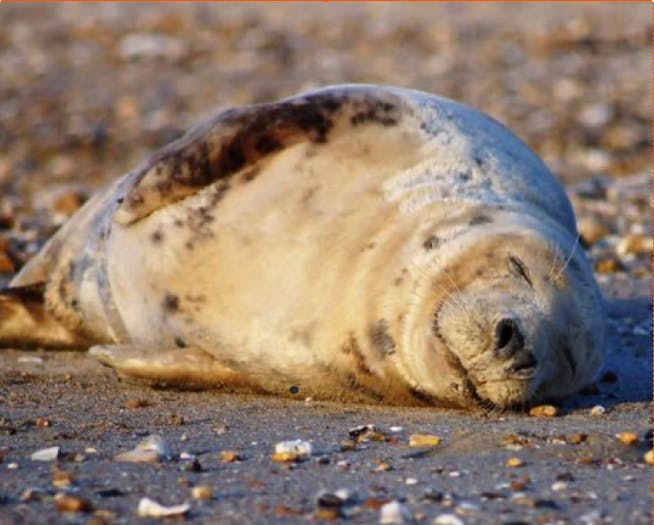
Seals
To tell the difference between the Common and Grey Seal, look at the eyes and nose. A Grey Seal has a longer muzzle with the eyes set further apart while a Common Seal has a more concave and short head. Grey Seals are also larger, and their pups are born with a white coat whereas a Common Seal’s pup will already be brown and able to swim.
If you are lucky enough to see one of these beautiful mammals, either in the water or on land, please keep your distance, at least 100m, and ensure that dogs are on their leads and not allowed to approach. Never get between a mother and a pup.
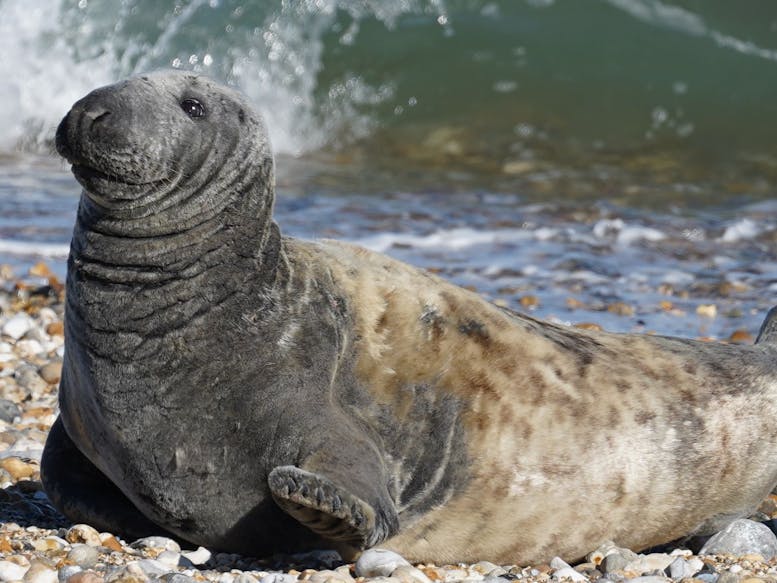
Grey Seals
The larger of the two visitors who can be seen in Selsey, the Grey Seal has rather an unfortunate scientific name – Halichoerus grypus – which translates as ‘hooked nosed sea pig’! If you catch sight of one in profile, you may see the resemblance.
Grey seals spend most of their time out at sea, feeding on fish or ‘bottling’ and ‘logging’. This is where they bob around either vertically or horizontally in the water with their head or back just above the surface. This is how they rest while they are out in deeper waters and can’t haul out on to a beach. They are amazing divers and can stay underwater looking for food for up to 45 minutes using a specially adapted respiratory and circulation system which means that they can hold extra oxygen in their blood and muscles rather than their lungs. This system enables Grey Seals to let most of the air out of their lungs just before diving down, air that would otherwise cause them to float. Amazingly, Grey Seals can actually smell underwater. In fact, smell is one of the Grey Seal’s strongest senses and they will greet each other by sniffing, working out who is who. It is also the way that mothers identify their pups.

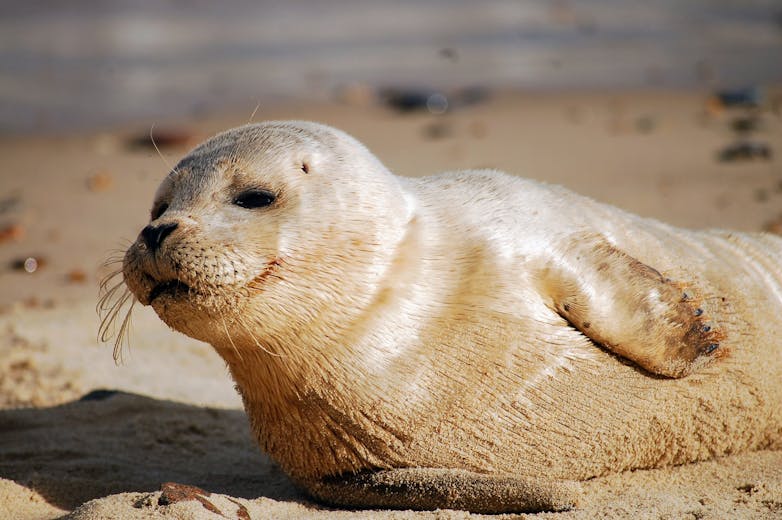
Grey Seal pups
Grey Seal pups are born between September and December, large colonies breeding together. The pups are covered in fluffy white coats and will remain on land, being fed by the mother, drinking two and a half litres of her rich milk every day.
The mother seal will lose a significant amount of weight during this process while the pup can grow by as much as 30kg in two weeks. After several weeks of this tender care, the females head back out to sea, leaving the pups alone on the beach to shed their white coat and build up the courage to take the plunge and learn to catch fish for themselves. Once the pup coat is shed, adult Grey Seals have different patterns of fur for males and females, the males being darker and of a more solid colour while the females have a steely gray back and a mottled, creamy colour belly. This fur pattern is unique to each seal, will be kept throughout their whole life and can be used to recognise individuals.
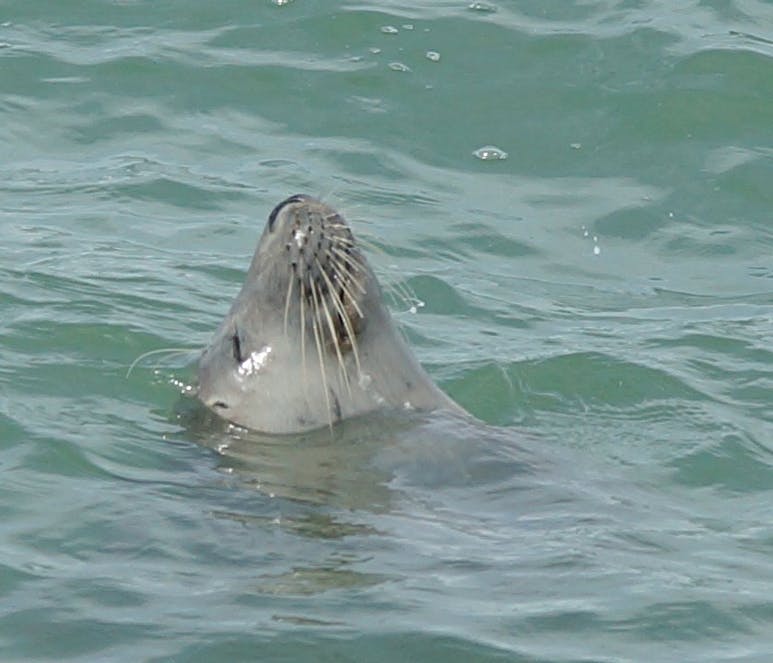
Common Seals

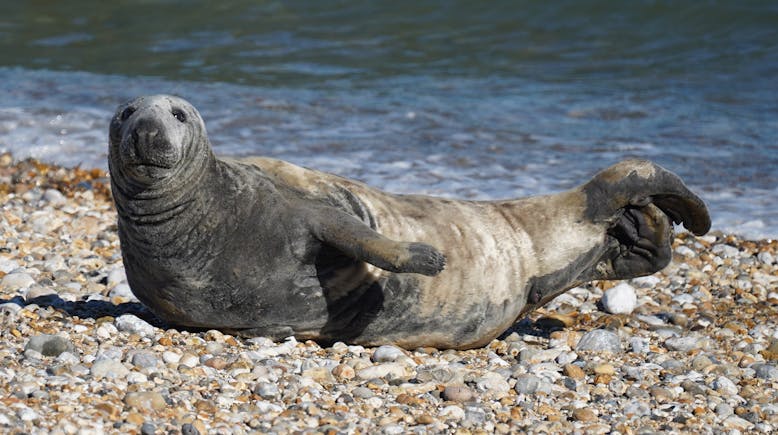
Common Seals on land
When on land, they Common Seals can often be seen holding themselves like a banana with both the head and tail in the air at the same time.
Like the Grey Seal, Common Seals feed on fish but they will also eat squid, whelks, crabs and mussels, happily swimming up estuaries or into large steams in pursuit of a good source of food.
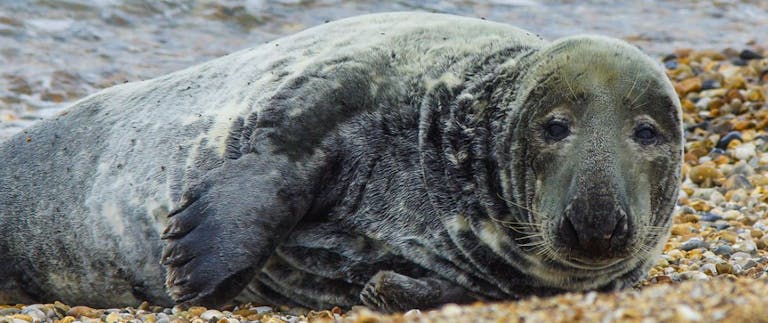
Common Seal pups
